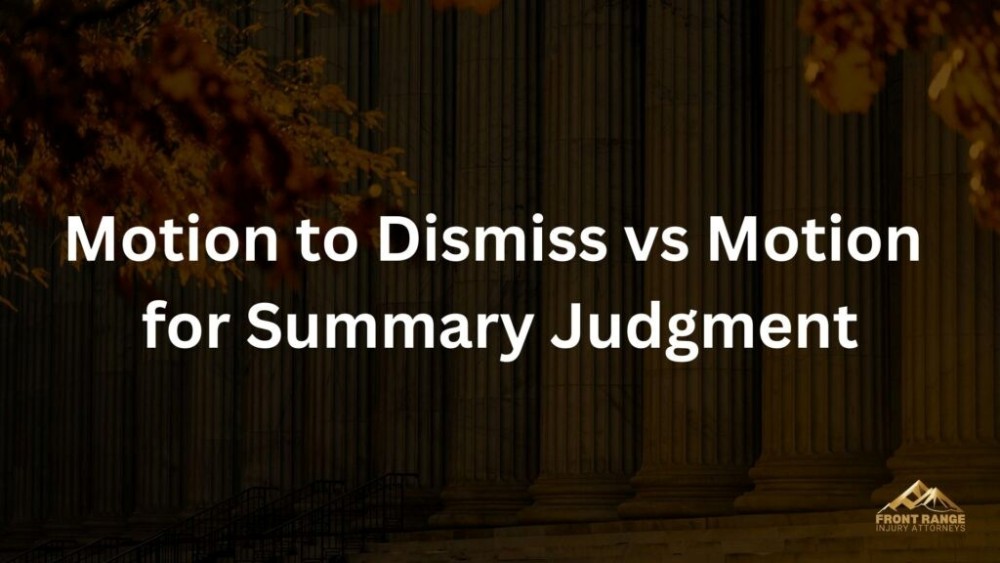Get Your Legal Documents Now!
Whether you are dealing with a complex family matter, facing criminal charges, or navigating the intricacies of business law, our mission is to provide you with comprehensive, compassionate, and expert legal guidance.

Learn the key differences between a motion to dismiss and a motion for summary judgment. Understand their timing, purpose, evidence requirements, and how Legal Husk can help you file either effectively.
Motion to Dismiss vs. Motion for Summary Judgment: What’s the Difference?
Introduction
When facing litigation, the last thing you want is a drawn-out, expensive trial. Fortunately, the legal system provides powerful tools to resolve cases early. Two of the most strategic tools are the motion to dismiss and the motion for summary judgment. While they may seem similar in goal—to end a case before trial—they differ greatly in timing, purpose, and the type of evidence required.
Understanding the differences between these two motions can help you make smarter decisions about your case, whether you're a plaintiff, defendant, or legal professional. In this guide, we break down how each motion works, when it should be used, and how Legal Husk can help you craft and file them with confidence.
What Is a Motion to Dismiss?
A motion to dismiss is typically filed at the beginning of a case, usually before any discovery (e.g., depositions, document exchange) has taken place. It argues that even if everything in the complaint is true, the plaintiff does not have a legally valid claim.
Common Grounds for a Motion to Dismiss:
Key Features:
When to Use It:
What Is a Motion for Summary Judgment?
A motion for summary judgment is typically filed after discovery is complete. It argues that, based on the evidence collected, there is no genuine dispute of material fact, and the moving party is entitled to judgment as a matter of law.
Key Requirements:
When to Use It:
Comparison: Motion to Dismiss vs. Motion for Summary Judgment
Strategic Differences
Speed
Complexity
Risk Level
Can You File Both in the Same Case?
Yes. A party can file a motion to dismiss at the beginning of the case and, if it is denied or only partially granted, can later file a motion for summary judgment once discovery has occurred.
Example:
When Should You File Each Motion?
File a Motion to Dismiss When:
File a Motion for Summary Judgment When:
What Happens If They Are Denied?
If a Motion to Dismiss Is Denied:
If a Motion for Summary Judgment Is Denied:
Real-Life Example: Why These Motions Matter
Case A: Motion to Dismiss Granted A business was sued for breach of contract. The plaintiff failed to attach the contract and did not allege any clear breach. The judge granted a motion to dismiss, saving the business from months of litigation.
Case B: Summary Judgment Granted An employer was accused of wrongful termination. After discovery, the employer provided emails and sworn statements proving the employee was terminated for performance issues. The judge granted summary judgment in favor of the employer.
How Legal Husk Can Help
At Legal Husk, we specialize in drafting and filing both motions to dismiss and motions for summary judgment. Whether you’re at the beginning of your case or preparing for trial, we can help you:
📌 Visit:
Final Thoughts
The difference between a motion to dismiss and a motion for summary judgment is critical to your litigation strategy. While both aim to resolve cases without trial, they operate at different stages and require different levels of evidence. Knowing when and how to use these motions can save you time, money, and unnecessary courtroom battles.
📩 Need a motion drafted or reviewed? Visit Legal Husk today to get court-ready documents and expert support for every stage of your case.
Whether you are dealing with a complex family matter, facing criminal charges, or navigating the intricacies of business law, our mission is to provide you with comprehensive, compassionate, and expert legal guidance.
Comments